#jean ii of france
Explore tagged Tumblr posts
Text
"It is not clear why the treaty of the fleurs de lys [between England and France] failed. But it is possible to guess. The most likely explanation is that John II’s councillors were appalled by what he had agreed at Villeneuve and made difficulties about the delivery of the security. In mid-July an English officer, Thomas Driffield, left England with sixty men-at-arms to take possession of Dun, Ainay and la Roche-sur-Yon. The story of his mission is unknown. But it is plain that it failed.
Then, early in September 1363, [Louis of Anjou, John II's second son and one of the signatories of the treaty, escaped from English captivity]. Anjou, an able and ambitious young man of twenty-four, had married for love (and without his father’s consent) a daughter of Charles of Blois shortly before he had surrendered as a hostage two years before. He had borne his captivity particularly ill. Like the other royal princes he was allowed to absent himself from Calais on his parole for up to three days at a time. He made use of the privilege to visit the shrine of Notre-Dame de Boulogne and to see his wife [Marie of Blois-Penthièvre] at his father-in-law’s castle of Guise. He decided not to return. It was an unusual event among those who were bound by the aristocratic code of honour. John II was furious. He summoned his errant son to a family conference at the town of Saint-Quentin. The prince, afraid that he would be arrested and forcibly returned to England, would only meet them in an open field some four miles from the walls. All their entreaties failed to move him. The treaty of the fleurs de lys was dead. Many in France must have been relieved."
— Jonathan Sumption, The Hundred Years War, Volume 2: Trial by Fire (The Middle Ages Series)
#I have to admire the audacity#(Edward III was furious lol)#Louis I of Anjou#marie of blois#idk if they actually married for love (maybe?) but it was without his father's consent and they seem to have been very close#john II of France#french history#hundred years war#14th century#jean ii of france#my post
3 notes
·
View notes
Text
This late-thirteenth-century New Testament is of extraordinary importance to our understanding of English mediaeval royal culture, politics, and diplomacy during the Hundred Years’ War. Although as the work of the Cholet Master its decoration makes it a very attractive object in its own right, it is its textual interest and staggering provenance which make it a national treasure. The manuscript is previously unknown to scholarship, having been in private hands for over 300 years. Excitingly, the particular French translation of the New Testament it contains appears to be unique and ripe for significant philological research. Furthermore, it was owned by Jean II ‘le Bon’, King of France (1350-1364), whose signature – an exceedingly rare survival – is on its final page. It is highly likely that it was seized as war booty when he and his possessions were taken hostage at the Battle of Poitiers by the Black Prince in 1356, and it has been in England ever since. [...] Provenance: Owned by Jean le Bon, King of France, whose name is inscribed on the final page. Other erased inscriptions, readable under ultraviolet light, show that the manuscript was owned by Thomas of Lancaster, Duke of Clarence (1387–1421), second son of King Henry IV of England, and by Edmund Beaufort, 2nd Duke of Somerset (1406–1455). Beaufort gave the manuscript to Humphrey of Lancaster, Duke of Gloucester (1390–1447), fourth son of Henry IV and bibliophile.
For the impact on the studies of Humphrey's manuscript collection in particular (and for information about two other manuscripts connected with him this year), David Rundle has a blog post here.
#manuscripts#humphrey duke of gloucester#thomas duke of clarence#edmund beaufort 2nd duke of somerset#edward the black prince#jean ii of france#hundred years war#medieval france#patronage#historian: david rundle
3 notes
·
View notes
Text
Notre-Dame de Paris, Paris, France: Notre-Dame is reborn from its ashes. After five years of work and joint effort, made possible by national and international solidarity, this icon of resilience, art and history will once again shine in the heart of Paris... Notre-Dame de Paris, often referred to simply as Notre-Dame, is a medieval Catholic cathedral on the Île de la Cité, in the 4th arrondissement of Paris, France. The cathedral, dedicated to the Virgin Mary, is considered one of the finest examples of French Gothic architecture. Wikipedia
#Notre-Dame de Paris#4th arrondissement#Parvis Notre-Dame – Place Jean-Paul-II#Paris#ile de france#europe#France
480 notes
·
View notes
Text

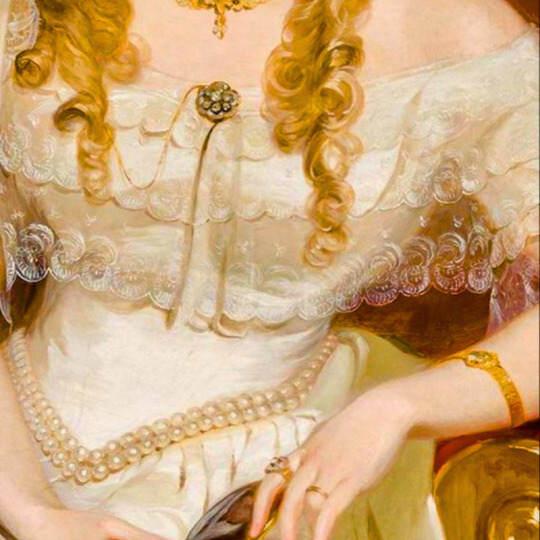



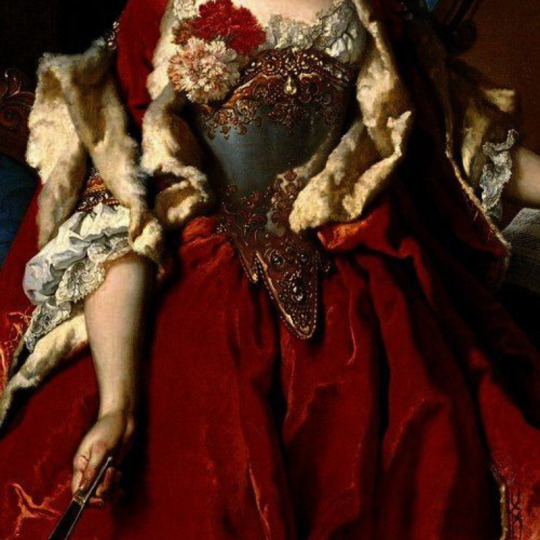
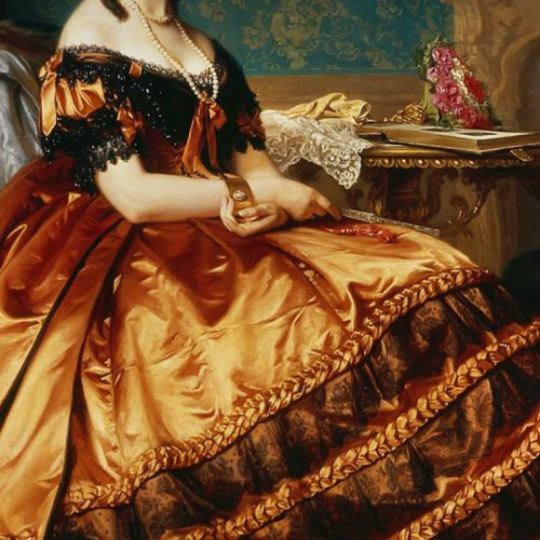
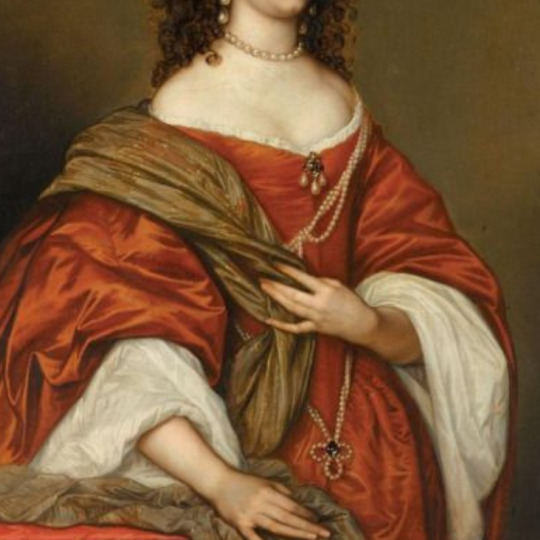
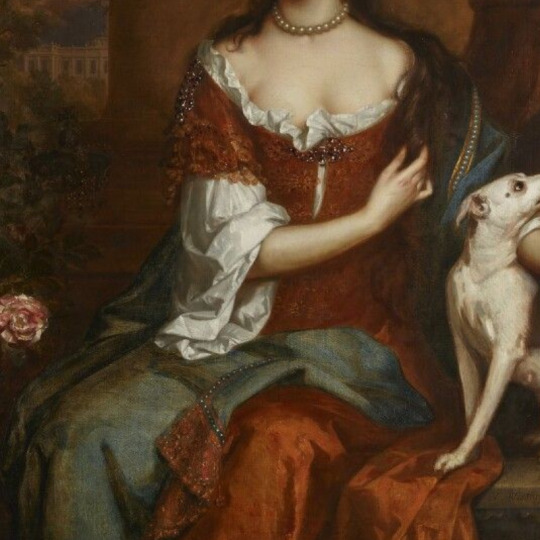


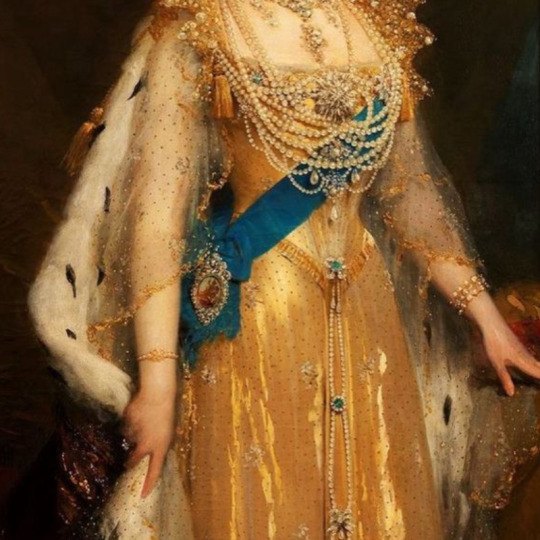
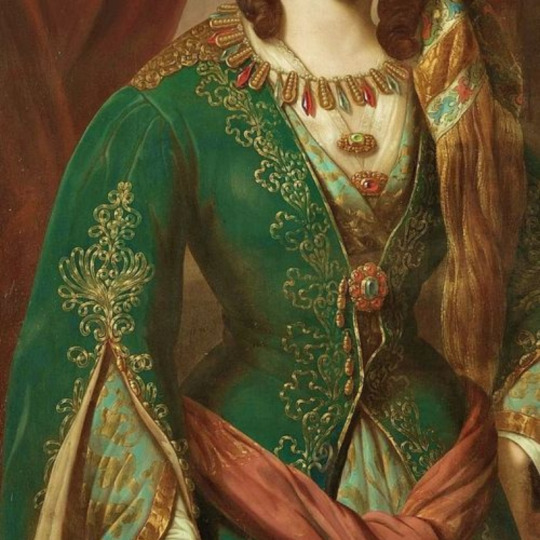

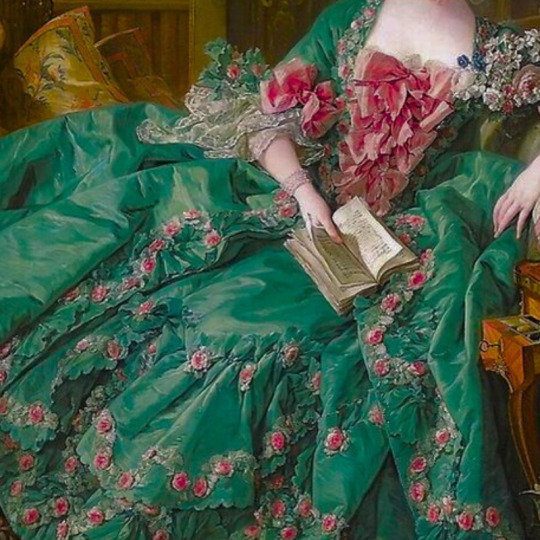
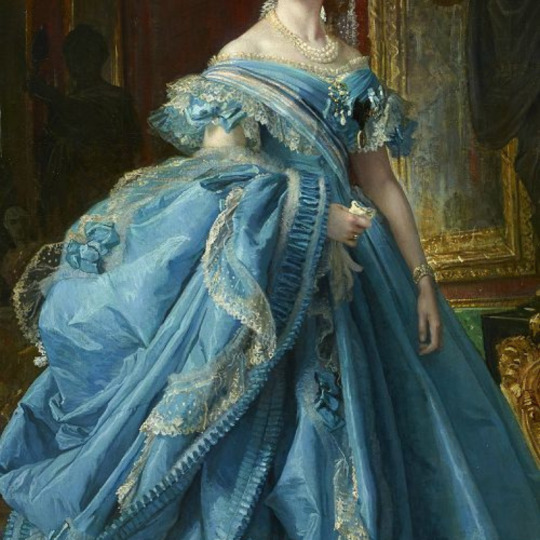
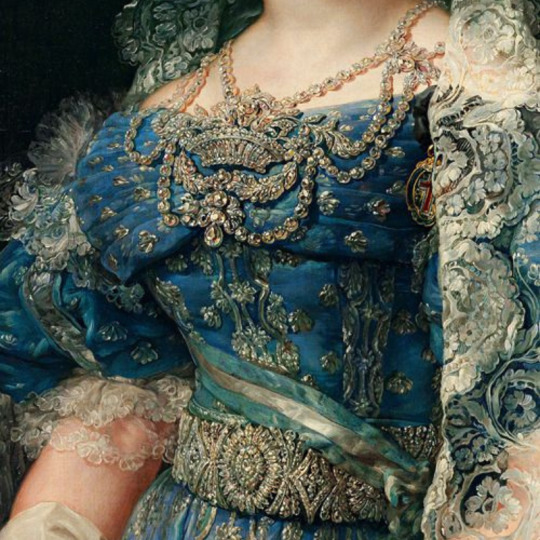



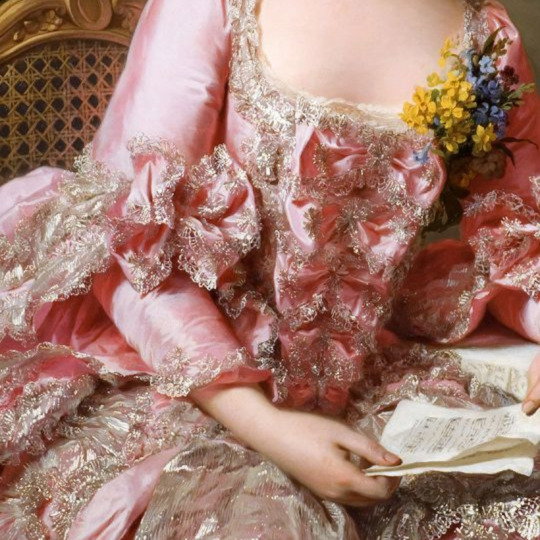

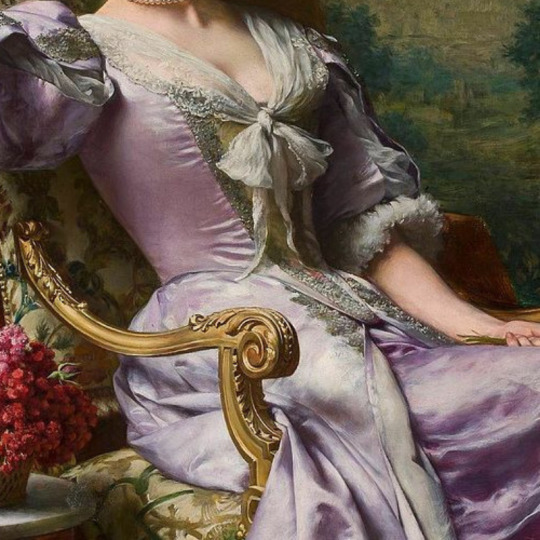
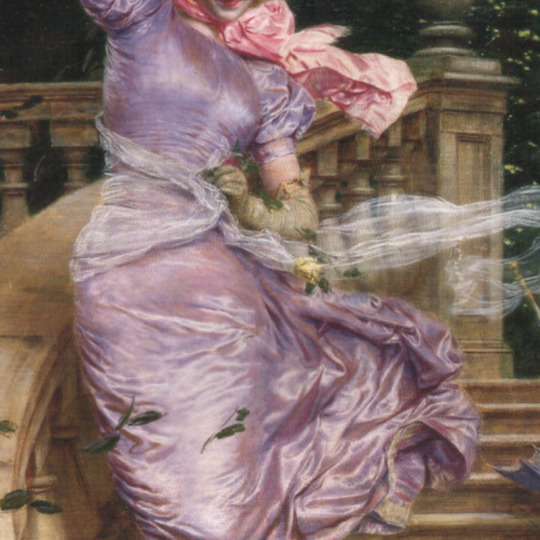


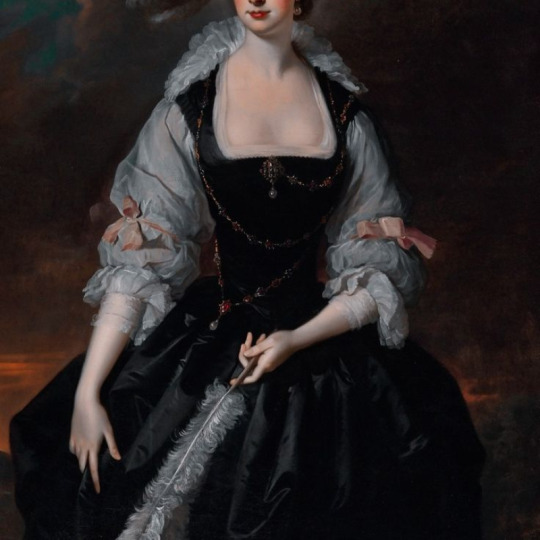
dresses in art
#portrait of the hon. mrs harold by john collier#unknown i cant find this one#portrait of josephine stieler as a bride by joseph karl stieler#portrait of frances anne vane by alexandre jean dubois#portrait of isabelle antoinette barones sloet van toutenberg by nicaise de keyser#portrait of marguerite de seve by nicolas de largillere#portrait of emilia wlodkowska by jozef simmler#portrait of a lady by adriaen hanneman#mary of modena by willem wissing#esther and ahasuerus by artemisia gentileschi#alexandra feodorovna by a malyukov#don't know the artist but its supposed to be the coronation dress of queen alexandra#woman in turkish dress by paul emil jacobs#portrait of juliane by johann heinrich tischbein#portrait of madame de pompadour by francois boucher#princess isabella of asturias vicente palmaroli#maria christina de borbon-dos sicilas reina de espana by vicente lopez y portana#isabella ii queen of spain by federico de madrazo y kuntz#afternoon tea for three by frederic soulacroix#princess maria carolina augusta of bourbon by franz xaver winterhalter#marie suzanne giroust by alexander roslin#the new bracelet by frans verhas#a lady in a lilac dress by wladysaw czachorski#a gust of wind by gaetano bellei#maria grafin zu munster by harry von hente#retrato de dona antonia roca y mestre by angel maria cortellini#frances courtenay by thomas hudson#i loved colorcoding this and i used some from my last edit#art history#history
2K notes
·
View notes
Text
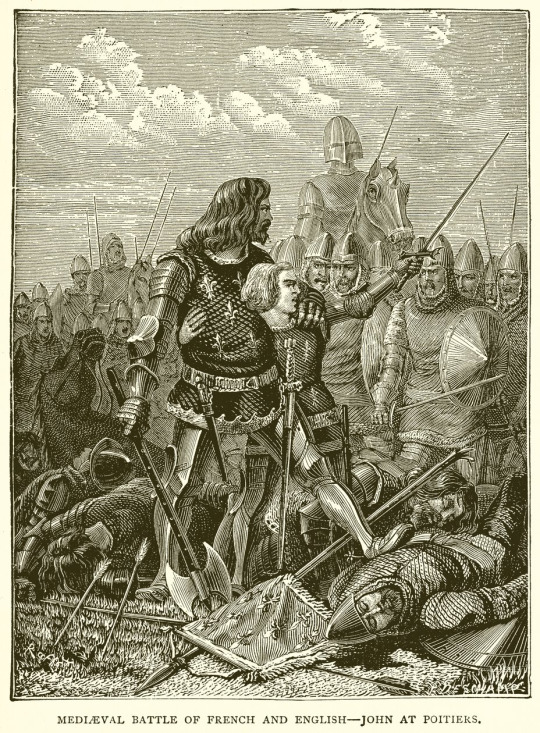
Mediaeval Battle of French and English — The Surrender of John II of France at the Battle of Poitiers.
English School, (19th century)
#battle of poitiers#medieval#mediaeval#middle ages#england#france#king#john ii#french#philip the bold#son#english#knights#john the good#jean le bon#armour#art#history#europe#european#house of valois#surrender#knight#soldiers#encircled#axe#helmet
82 notes
·
View notes
Text

Jean le Bon.
#royaume de france#maison de valois#jean ii#roi de france#vive le roi#kingdom of france#house of valois#maurice druon#les rois maudits#the accursed kings#quand un roi perd la france#royalty
15 notes
·
View notes
Text
The First Light of Trinity
— By Alex Wellerstein | July 16, 2015 | Annals of Technology
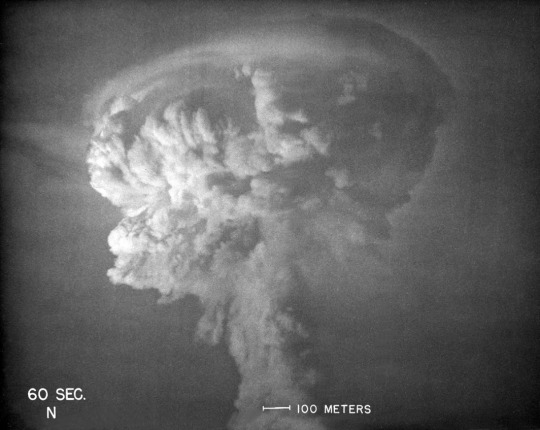
Seventy years ago, the flash of a nuclear bomb illuminated the skies over Alamogordo, New Mexico. Courtesy Los Alamos National Laboratory
The light of a nuclear explosion is unlike anything else on Earth. This is because the heat of a nuclear explosion is unlike anything else on Earth. Seventy years ago today, when the first atomic weapon was tested, they called its light cosmic. Where else, except in the interiors of stars, do the temperatures reach into the tens of millions of degrees? It is that blistering radiation, released in a reaction that takes about a millionth of a second to complete, that makes the light so unearthly, that gives it the strength to burn through photographic paper and wound human eyes. The heat is such that the air around it becomes luminous and incandescent and then opaque; for a moment, the brightness hides itself. Then the air expands outward, shedding its energy at the speed of sound—the blast wave that destroys houses, hospitals, schools, cities.
The test was given the evocative code name of Trinity, although no one seems to know precisely why. One theory is that J. Robert Oppenheimer, the head of the U.S. government’s laboratory in Los Alamos, New Mexico, and the director of science for the Manhattan Project, which designed and built the bomb, chose the name as an allusion to the poetry of John Donne. Oppenheimer’s former mistress, Jean Tatlock, a student at the University of California, Berkeley, when he was a professor there, had introduced him to Donne’s work before she committed suicide, in early 1944. But Oppenheimer later claimed not to recall where the name came from.
The operation was designated as top secret, which was a problem, since the whole point was to create an explosion that could be heard for a hundred miles around and seen for two hundred. How to keep such a spectacle under wraps? Oppenheimer and his colleagues considered several sites, including a patch of desert around two hundred miles east of Los Angeles, an island eighty miles southwest of Santa Monica, and a series of sand bars ten miles off the Texas coast. Eventually, they chose a place much closer to home, near Alamogordo, New Mexico, on an Army Air Forces bombing range in a valley called the Jornada del Muerto (“Journey of the Dead Man,” an indication of its unforgiving landscape). Freshwater had to be driven in, seven hundred gallons at a time, from a town forty miles away. To wire the site for a telephone connection required laying four miles of cable. The most expensive single line item in the budget was for the construction of bomb-proof shelters, which would protect some of the more than two hundred and fifty observers of the test.
The area immediately around the bombing range was sparsely populated but not by any means barren. It was within two hundred miles of Albuquerque, Santa Fe, and El Paso. The nearest town of more than fifty people was fewer than thirty miles away, and the nearest occupied ranch was only twelve miles away—long distances for a person, but not for light or a radioactive cloud. (One of Trinity’s more unusual financial appropriations, later on, was for the acquisition of several dozen head of cattle that had had their hair discolored by the explosion.) The Army made preparations to impose martial law after the test if necessary, keeping a military force of a hundred and sixty men on hand to manage any evacuations. Photographic film, sensitive to radioactivity, was stowed in nearby towns, to provide “medical legal” evidence of contamination in the future. Seismographs in Tucson, Denver, and Chihuahua, Mexico, would reveal how far away the explosion could be detected.
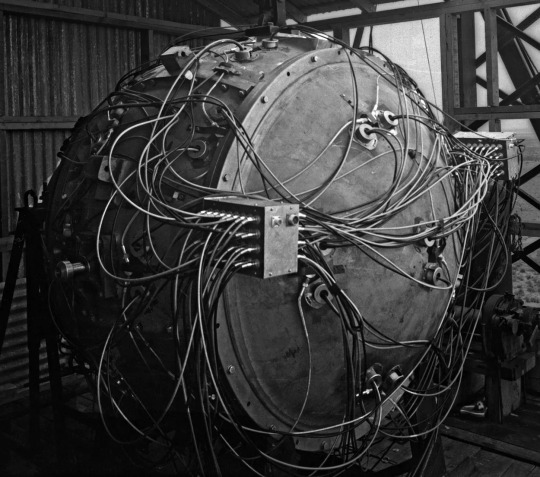
The Trinity test weapon. Courtesy Los Alamos National Laboratory
On July 16, 1945, the planned date of the test, the weather was poor. Thunderstorms were moving through the area, raising the twin hazards of electricity and rain. The test weapon, known euphemistically as the gadget, was mounted inside a shack atop a hundred-foot steel tower. It was a Frankenstein’s monster of wires, screws, switches, high explosives, radioactive materials, and diagnostic devices, and was crude enough that it could be tripped by a passing storm. (This had already happened once, with a model of the bomb’s electrical system.) Rain, or even too many clouds, could cause other problems—a spontaneous radioactive thunderstorm after detonation, unpredictable magnifications of the blast wave off a layer of warm air. It was later calculated that, even without the possibility of mechanical or electrical failure, there was still more than a one-in-ten chance of the gadget failing to perform optimally.
The scientists were prepared to cancel the test and wait for better weather when, at five in the morning, conditions began to improve. At five-ten, they announced that the test was going forward. At five-twenty-five, a rocket near the tower was shot into the sky—the five-minute warning. Another went up at five-twenty-nine. Forty-five seconds before zero hour, a switch was thrown in the control bunker, starting an automated timer. Just before five-thirty, an electrical pulse ran the five and a half miles across the desert from the bunker to the tower, up into the firing unit of the bomb. Within a hundred millionths of a second, a series of thirty-two charges went off around the device’s core, compressing the sphere of plutonium inside from about the size of an orange to that of a lime. Then the gadget exploded.
General Thomas Farrell, the deputy commander of the Manhattan Project, was in the control bunker with Oppenheimer when the blast went off. “The whole country was lighted by a searing light with the intensity many times that of the midday sun,” he wrote immediately afterward. “It was golden, purple, violet, gray, and blue. It lighted every peak, crevasse, and ridge of the nearby mountain range with a clarity and beauty that cannot be described but must be seen to be imagined. It was that beauty the great poets dream about but describe most poorly and inadequately.” Twenty-seven miles away from the tower, the Berkeley physicist and Nobel Prize winner Ernest O. Lawrence was stepping out of a car. “Just as I put my foot on the ground I was enveloped with a warm brilliant yellow white light—from darkness to brilliant sunshine in an instant,” he wrote. James Conant, the president of Harvard University, was watching from the V.I.P. viewing spot, ten miles from the tower. “The enormity of the light and its length quite stunned me,” he wrote. “The whole sky suddenly full of white light like the end of the world.”

In its first milliseconds, the Trinity fireball burned through photographic film. Courtesy National Archives and Records Administration
Trinity was filmed exclusively in black and white and without audio. In the main footage of the explosion, the fireball rises out of the frame before the cameraman, dazed by the sight, pans upward to follow it. The written accounts of the test, of which there are many, grapple with how to describe an experience for which no terminology had yet been invented. Some eventually settle on what would become the standard lexicon. Luis Alvarez, a physicist and future participant in the Hiroshima bombing, viewed Trinity from the air. He likened the debris cloud, which rose to a height of some thirty thousand feet in ten minutes, to “a parachute which was being blown up by a large electric fan,” noting that it “had very much the appearance of a large mushroom.” Charles Thomas, the vice-president of Monsanto, a major Manhattan Project contractor, observed the same. “It looked like a giant mushroom; the stalk was the thousands of tons of sand being sucked up by the explosion; the top of the mushroom was a flowering ball of fire,” he wrote. “It resembled a giant brain the convolutions of which were constantly changing.”
In the months before the test, the Manhattan Project scientists had estimated that their bomb would yield the equivalent of between seven hundred and five thousand tons of TNT. As it turned out, the detonation force was equal to about twenty thousand tons of TNT—four times larger than the expected maximum. The light was visible as far away as Amarillo, Texas, more than two hundred and eighty miles to the east, on the other side of a mountain range. Windows were reported broken in Silver City, New Mexico, some hundred and eighty miles to the southwest. Here, again, the written accounts converge. Thomas: “It is safe to say that nothing as terrible has been made by man before.” Lawrence: “There was restrained applause, but more a hushed murmuring bordering on reverence.” Farrell: “The strong, sustained, awesome roar … warned of doomsday and made us feel that we puny things were blasphemous.” Nevertheless, the plainclothes military police who were stationed in nearby towns reported that those who saw the light seemed to accept the government’s explanation, which was that an ammunition dump had exploded.
Trinity was only the first nuclear detonation of the summer of 1945. Two more followed, in early August, over Hiroshima and Nagasaki, killing as many as a quarter of a million people. By October, Norris Bradbury, the new director of Los Alamos, had proposed that the United States conduct “subsequent Trinity’s.” There was more to learn about the bomb, he argued, in a memo to the new coördinating council for the lab, and without the immediate pressure of making a weapon for war, “another TR might even be FUN.” A year after the test at Alamogordo, new ones began, at Bikini Atoll, in the Marshall Islands. They were not given literary names. Able, Baker, and Charlie were slated for 1946; X-ray, Yoke, and Zebra were slated for 1948. These were letters in the military radio alphabet—a clarification of who was really the master of the bomb.
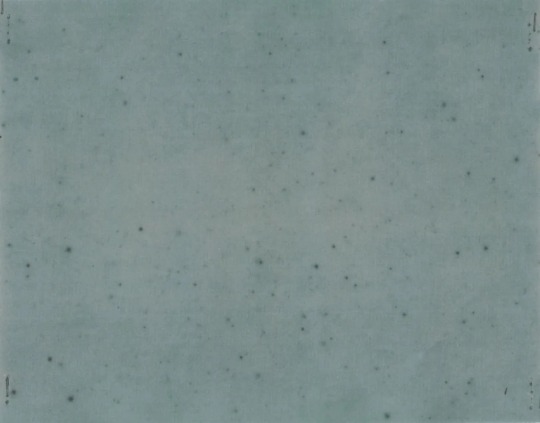
Irradiated Kodak X-ray film. Courtesy National Archives and Records Administration
By 1992, the U.S. government had conducted more than a thousand nuclear tests, and other nations—China, France, the United Kingdom, and the Soviet Union—had joined in the frenzy. The last aboveground detonation took place over Lop Nur, a dried-up salt lake in northwestern China, in 1980. We are some years away, in other words, from the day when no living person will have seen that unearthly light firsthand. But Trinity left secondhand signs behind. Because the gadget exploded so close to the ground, the fireball sucked up dirt and debris. Some of it melted and settled back down, cooling into a radioactive green glass that was dubbed Trinitite, and some of it floated away. A minute quantity of the dust ended up in a river about a thousand miles east of Alamogordo, where, in early August, 1945, it was taken up into a paper mill that manufactured strawboard for Eastman Kodak. The strawboard was used to pack some of the company’s industrial X-ray film, which, when it was developed, was mottled with dark blotches and pinpoint stars—the final exposure of the first light of the nuclear age.
#Hiroshima | Japan 🇯🇵 | John Donne | Manhattan Project | Monsanto#Nagasaki | Japan 🇯🇵 | Nuclear Weapons | Second World War | World War II#The New Yorker#Alex Wellerstein#Los Alamos National Laboratory#New Mexico#J. Robert Oppenheimer#John Donne#Jean Tatlock#University of California Berkeley#Jornada del Muerto | Journey of the Dead Man#General Thomas Farrell#Nobel Prize Winner Physicist Ernest O. Lawrence#Luis Alvarez#US 🇺🇸#China 🇨🇳#France 🇫🇷#Soviet Union (Now Russia 🇷🇺)#Alamogordo | New Mexico#Eastman Kodak#Nuclear Age
39 notes
·
View notes
Text



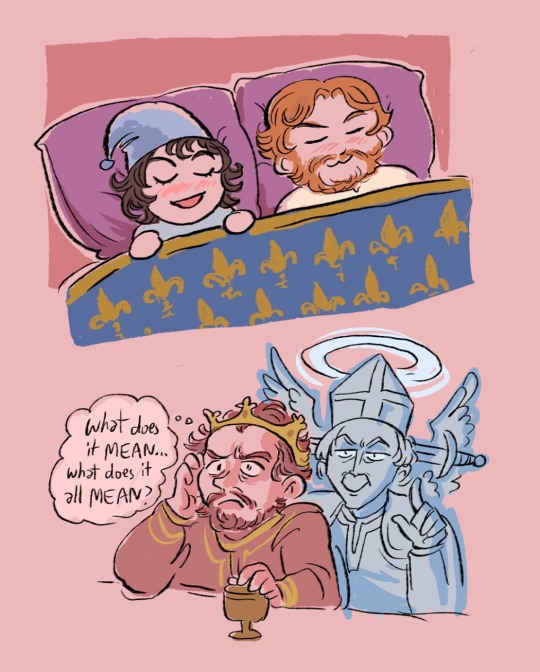


Philip II Augustus, or as described in someone's tags, one of the "top 10 most punchable historical figures. Unfortunately. He is also extremely entertaining."
Philip was the first to style himself King of France rather than King of the Franks. he is known for his role in the Third Crusade and tumultuous relationships and manouvers against Henry II, Richard I, and John I of England, eventually resulting in regaining the Angevin Empire's territories in France. Bertran de Born early on derided some of his political and military decisions as being cowardly in some contemporary poems (a "lamb" against Richard's "lion"). However, later writings described him as being "more cunning than a fox," and as one who loved to "provoke discord" amongst men who resisted him. He also seems to have done a lot of things that have been puzzling for some historians, such as
While an notable figure in French history obviously, in my perusals he seems to rarely ever pop up in mainstream recent anglophone media as a major character, but when he does at all it seems like it's to have toxic gay drama with Richard. This is mostly not very historical and based on dated early 20th century scholarship, but has made for some very iconic entertainment that, in spirit at least, seems consistent with the legacy of Being A Dramatic Bitch
#Philip Augustus#Philippe Auguste#Philip II of France#Additional notes:#Most of my reading has been jean flori and Strickland#And flori is. Very funny. Very dramatic even when he is not trying to#He's just constantly like *scratches head* So Philip did XYZ. We don't know why and it doesn't make sense#But he sure did that behavior#Debunked yaoi but th#No respect for monarchs but I will fujofy their toxic traits. Sorry not sorry#12th century#French history#Fanart#Medieval#Capetians#Unrelated but I started drawing him brunette just bc like#Most of the modern art portrayals run with that#And it just feels consistent to me lmao in my brain#He's bald anyway in his later life so it doesn't matter#Bald Philippe representation#My art
30 notes
·
View notes
Text


CARENTAN-LES-MARAIS, France (AP) — Together, the collective age of the bride and groom was nearly 200.
But World War II veteran Harold Terens and his sweetheart Jeanne Swerlin proved that love is eternal as they tied the knot Saturday inland of the D-Day beaches in Normandy, France.
Their respective ages — he’s 100, she’s a youngster of just 96 — made their nuptials an almost double-century celebration.
Terens called it “the best day of my life.”
On her way into the nuptials, the bubbly bride-to-be said:
“It’s not just for young people, love, you know? We get butterflies. And we get a little actionalso.”
The location was the elegant stone-worked town hall of Carentan, a key initial D-Day objective that saw ferocious fighting after the 6 June 1944 Allied landings that helped rid Europe of Adolf Hitler’s tyranny.
Like other towns and villages across the Normandy coast where nearly 160,000 Allied troops came ashore under fire on five code-named beaches, it’s an effervescent hub of remembrance and celebration on the 80th anniversary of the deeds and sacrifices of young men and women that day, festooned with flags and bunting and with veterans feted like rockstars.
As the swing of Glenn Miller and other period tunes rang out on the streets, well-wishers — some in WWII-period clothes — were already lined up a good hour before the wedding, behind barriers outside the town hall, with a rousing pipe and drum band also on hand to serenade the happy couple.
After both declaring “oui” to vows read by Carentan’s mayor in English, the couple exchanged rings.
“With this ring, I thee wed,” Terens said.
She giggled and gasped, “Really?”
With Champagne flutes in hand, they waved through an open window to the adoring crowds outside.
“To everybody’s good health. And to peace in the world and the preservation of democracy all over the world and the end of the war in Ukraine and Gaza,” Terens said as he and his bride then clinked glasses and drank.
The crowd yelled “la mariée!” – the bride! — to Swerlin, who wore a long flowing dress of vibrant pink.
Terens looked dapper in a light blue suit and matching pink kerchief in his breast pocket.
And they enjoyed a very special wedding-night party:
They were invited to the state dinner at the Elysee Palace on Saturday night with President Emmanuel Macron and U.S. President Joe Biden.
“Congratulations to the newlyweds,” Macron said, prompting cheers and a standing ovation from other guests during the toast praising French-American friendship.
“(The town of) Carentan was happy to host your wedding, and us, your wedding dinner,” he told the couple.

The wedding was symbolic, not binding in law.
Mayor Jean-Pierre Lhonneur’s office said he wasn’t empowered to wed foreigners who aren’t residents of Carentan and that the couple, who are both American, hadn’t requested legally binding vows.
However, they could always complete those formalities back in Florida if they wished.
Lhonneur likes to say that Normandy is practically the 51st state of the USA, given its reverence and gratitude for Allied soldiers and the sacrifices of tens of thousands who never made it home from the Battle of Normandy.
“Love is eternal, yes, maybe,” the mayor said, referring to the newlyweds, although his comments also fittingly describe the feelings of many Normans for veterans.
“I hope for them the best happiness together.”
Dressed in a 1940s dress that belonged to her mother, Louise, and a red beret, 73-year-old Jane Ollier was among spectators who waited for a glimpse of the lovebirds.
The couple, both widowed, grew up in New York City: she in Brooklyn, he in the Bronx.
“It’s so touching to get married at that age,” Ollier said. “If it can bring them happiness in the last years of their lives, that’s fantastic.”
The WWII veteran first visited France as a 20-year-old U.S. Army Air Forces corporal shortly after D-Day.
Terens enlisted in 1942 and, after shipping to Britain, was attached to a four-pilot P-47 Thunderbolt fighter unit as their radio repair technician.
On D-Day, Terens helped repair planes returning from France, so they could rejoin the battle.
He said half his company’s pilots died that day.
Terens himself went to France 12 days later, helping transport freshly captured Germans and just-freed American POWs to England.
Following the Nazi surrender in May 1945, Terens again helped transport freed Allied prisoners to England before he shipped back to the U.S. a month later.
Swerlin made it abundantly clear that her new centenarian husband doesn’t lack for rizz.
“He’s the greatest kisser ever, you know?” she proudly declared before they embraced enthusiastically for TV cameras.
“All right ! That’s it for now !” Terens said as he came up for air.
To which she quickly quipped: “You mean there’s more later?”
Source: Japan News
youtube
Historic marriage: He's 100, she's 96 | War II veteran Harold Terens and Jeanne Swerlin in France
9 June 2024
#Harold Terens#Jeanne Swerlin#D-Day#D-Day 1944#Normandy#France#World War II#World War II veteran#war heroes#war veterans#Allied Forces#Carentan#Elysee Palace#French President Emmanuel Macron#U.S. President Joe Biden#Mayor Jean-Pierre Lhonneur#Youtube#wedding#love
4 notes
·
View notes
Text
Capétiens vs Plantagenêts: a matter of suzerainty.
It was also his position as suzerain which gave Louis VII the chance of interfering in and inflaming the quarrels which raged in the Angevin family. This was an effective means of weakening his great antagonist. Henry II and Eleanor produced a large family, and reared four of their sons to the age at which custom demanded that they should be provided for. Their eldest son Henry was granted Normandy in October 1160 and was associated with his father on the throne of England in 1170. Richard was given Aquitaine in 1169 and Geoffrey Brittany in 1175. John, the youngest child of Henry and Eleanor, was not old enough to be entrusted with any estates until the very last years of his father's reign, and by the time he came of age all the available lands had been given away. As Duke of Normandy, Duke of Aquitaine, Count of Poitiers, the sons of Henry II came to perform homage to the King of France and became his men. It was in vain that Henry II sought to utilise the Norman procedure of pariage to maintain the unity of his continental territories in favour of his eldest son, the "Young King" Henry. (Under pariage the eldest son succeeded to all the heritable property and was alone answerable for it to the suzerain; each of his brothers received a share, but held it of him). This device could not be put into full operation in Aquitaine, which was not part of Henry's heritage but Eleanor's. And when she granted it to Richard, he owed homage not to his father or his eldest brother, but to the King of France. The Young King Henry had done homage as Duke of Normandy to Louis VII in October 1160. When he repeated his homage in 1170 it was made to embrace Anjou, Maine, and Brittany as well. At the same time Richard did homage to Louis for Aquitaine.
It is true that in 1174 Henry II compelled his sons to perform homage to him after their rebellion, but this new homage did not necessarily annul their homages to the King of France. Henry II himself had done homage to Louis VII in 1151 and again in 1169, and was to perform it yet again to Louis's successor, Philip Augustus, in 1180. Thus throughout the conflict between Louis VII and Henry II the French king's suzerainty was affirmed and recognised. This did not save Louis from defeats at his vassal's hands. Nevertheless, to judge from the Toulouse affair in 1159, Louis' suzerainty occasionally cramped Henry's style, and put him in the wrong in the eyes of contemporaries, including the barons of his continental fiefs. To play the rebel vassal was hardly prudent for a king when many of his own vassals were rebelliously inclined. It was not that the idea of rebellion itself shocked feudal society. On the contrary, it was one of the legitimate courses open to a vassal needing to safeguard his rights against the encroachments of his suzerain. But in the disputes between Louis VII and Henry II, Henry was the law-breaker as well as the vassal in revolt. For his rebelliousness against an impeccable suzerain there could be no justification.
It may be objected that Louis VII was constantly intriguing with Eleanor of Aquitaine and with Henry II's sons. But after all Eleanor, as Duchess of Aquitaine, was herself a royal vassal. Two of Henry's sons had done homage to Louis. Another, Geoffrey, by dint of his father's vassalage, was the French king's rear-vassal. And the king had, as suzerain, not merely the right but the duty to concern himself with the welfare and harmony of his great vassal's family, to ensure that a proper settlement was made on the sons. It would be unfair to accuse Louis of hypocrisy; nor did Henry ever complain that the French king was making trouble in his family. Louis' own grievances against Henry were many and varied, and Henry never made a serious effort to deny their validity.
Thus from 1154 to 1180 Henry II had the appearance of a vassal engaged in unjustifiable revolt against his suzerain. This line of conduct undermined his own position. It constantly reminded the baronage of the Angevin fiefs that the King of France was Henry's suzerain- if only because his suzerainty was so often invoked. And it helped to prevent the fusion of the individual elements of the Angevin empire on the continent. Provincial separation, already too strong for Angevin rule to subdue, was reinforced.
Robert Fawtier- The Capetian Kings of France
#xii#robert fawtier#the capetian kings of france#louis vii#henry ii of england#aliénor d'aquitaine#henry the young king#richard the lionheart#geoffrey plantagenêt#john lackland#jean sans terre
9 notes
·
View notes
Text
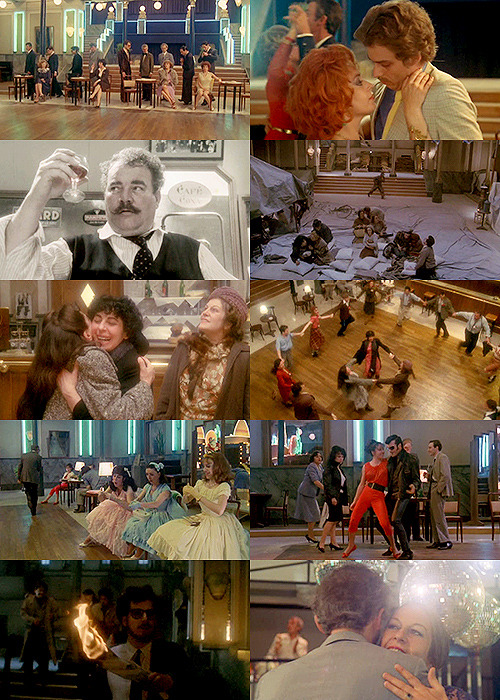
Le Bal (1983). Dance moves, music and fashion mark the passage of time inside a Paris dance hall, throughout fifty years of history.
It's rare to find a movie that feels this unique, particularly in a subgenre like dance films, but I don't think I've seen anything like this before. With no dialogue and almost constantly moving, this film beautifully explores the impact of World War II through the eyes of a ballroom and the dancers who went there. Really, really lovely, and some pretty sublime acting and miming. Magic! 8/10.
#le bal#the ball#1983#Oscars 56#Nom: Foreign Film#Ettore Scola#Jean-Claude Penchenat#Ruggero Maccari#Furio Scarpelli#Étienne Guichard#Régis Bouquet#Francesco De Rosa#algeria#france#world war ii#war#dance#8/10
6 notes
·
View notes
Text
Gilles, Pierre Drieu La Rochelle






#ebook#freebook#gilles#pierre drieu la rochelle#french literature#interwar period#romance#coming of age#jean paul sartre#france#germany#occupation#nazi#wwi#world war ii
1 note
·
View note
Text
things about about TSC I can't stop thinking about
"hindsight was a backstabbing bitch"
curtains symbolizing jeans healing journey, how he keeps them closed at Abby's in a effort to recreate the nest in search of some normalcy, how he opens them and looks out the window his new apartment, seeking calm in his overwhelm
"I want to go home" (13) meaning evermore vs. "I want to go home" (329) meaning to his apartment with Laila, Cat and jeremy
the fact that jean's phone is probably still in Abby's freezer
Kevin "their kindness matters" Day
Neil's smile is as unsettling to everyone else as it is to him and he has so much more Nathaniel in him than he recognizes in his own pov
Jean is so similar to neil in that they're both petty, dramatic bitches who care deeply about their teammates' safety
riko and the ravens quite literally took jean's name from him (Jean-Yves, Jonny, Paris)
"[Renee's] love was so tender it looked like grief as it curled her mouth and made her eyes shine"
jean gets forehead kisses from Renee and Cat
"that creepy little goalkeeper Andrew Minyard"
jean's many nicknames for neil: tiny bastard, tedious malcontent, abominable cockroach, wretched little runaway, ignorant child, etc.
Neil took the bandage off of jeans 3 and promptly stuck it over Kevin's chess peice
"I should have let him kill you," Jean said. "Probably," Neil agreed, "but you didn't, so here we all are."
"...aside from his outstanding murder charge, there was nothing interesting about that fox"
the fact that the point of tfc was to show characters who couldn't/wouldn't/ or were unable to heal from the trauma they had faced and yet from the very beginning and without question, TSC is about jean clawing his way forward and toward healing no matter what
the cheese drawer
dadmack dialed up to 1,000 See: "i will burn this house down before I let them touch you"
bisexual jean Moreau panicking over his teammates in swimsuits and Jeremy's long legs
"He's earned the right to be arrogant"
riko couldn't bring himself to hurt wymack because he was Kevin's father and Kevin was like a brother to riko and riko has always yearned for a father's recognition
Alvarez has a motorcycle and jean didn't say no to learning how to ride it
we know next to nothing about Jeremy Knox despite having chapters in his pov (why was he in therapy? why was his dad in France? what the hell did he do at the Fall banquet his freshman year to tear his family in half?)
that being said: Jeremy Knox is a rich boy with a butler
everything about Catalina Alverez
the fact that Jeremy knox has two brothers and one of them is probably dead
"rather than force the Trojans underground for that part, they simply built steps up and over it inside the stadium" the JUXTAPOSITION
Alvarez cooks and so now does jean
we know for a fact riko subjected Kevin to "subtler cruelties" while he was in the nest
"they never should have said yes when you asked" and "I didn't ask"
"as if you can tell a girl apart from a cow on a good day"
"permission to break his face, coach?" jean asked. "denied," white said.
all of thanksgiving pt. II
"alarm looked wrong on a face born for smiling"
jean casually saying "your apologies are as useful as perfume on a frog" to Lucas
Neil's whole relationship with Jean
David "I believe we all have the choice to be better than the hands that shaped us" Wymack
Neil generally being a menace to society but especially "Neil, being the person he was, pointed at the fire hydrant adjacent to it's front bumper and said, 'thats illegal, just so you know.'"
"the cracking heat in his chest could have been his ribs snapping or his heart breaking"
#tsc#tsc spoilers#the sunshine court#aftg#all for the game#jean moreau#neil josten#andrew minyard#kevin day#jeremy knox#cat alvarez#laila dermott
604 notes
·
View notes
Text

"Life is unfair. I got nothing but the best."
Jean Marais
He was the muse and lover of the great artist/writer/filmmaker Jean Cocteau, plus he was an actor of considerable skill and certain charisma, a film and theatre director, writer, and visual artist.
Marais was born Jean-Alfred Villain-Marais in Cherbourg to a shoplifting, sometimes violent, sometimes loving mother. He was always drawn to drama of all sorts. Expelled from school when, to amuse his friends, Marais dressed as a girl and flirted with a male teacher. As a kid, Marais worked various jobs including newspaper boy, photographer, and sketch artist.
In 1937, 24-year-old Marais first met the 48-year-old Cocteau. They became acquainted when Marais auditioned for a role in a revival of Cocteau's play OEDIPE-ROI. Cocteau cast Marais for the role, plus he fell madly in love with the young actor.
Marais and Cocteau became partners in life and art. Marais nudged Cocteau to write a special screenplay for him to play the lead role. L'ETERNEL RETOUR (1943) was that film and it became a commercial success and a critical triumph for both the filmmaker and its star.
Marais continued to act in films and plays while the Nazis occupied France during World War II. Both Cocteau and Marais stayed in Paris during the occupation despite the very real danger of having nearly everyone in the city knowing that they were a gay couple. Cocteau had some powerful connections who protected them, even after Marais punched a Vichy critic for writing a bad review of one of Cocteau's plays. Their names were posted in the French press, which was controlled by those nasty Nazis, but because of Cocteau's friends in high places, they avoided being arrested and sent to a concentration camp.
Marais tried to join the Resistance, but he was rejected for being gay and also because of his reputation for speaking candidly. So instead, he volunteered for France's Second Armored Division after the liberation of Paris and drove trucks carrying fuel and ammunition to the frontlines during the Allied invasion of Germany. Marais was eventually awarded the Croix de Guerre for his bravery during his wartime service.
During the Nazi occupation, there were other gay couples in Paris, but it was unusual for any of them to be openly living together, working together, and behaving like a married couple. They were especially brave, even maybe reckless.
After the war in 1946, L'ETERNEL RETOUR was released in the USA introducing Marais to American film fans. Photographs of his handsome face and hot body became a popular pin-up for teenage girls and for gay fans slyly aware of his real relationship with Cocteau.
Cocteau didn't consider himself a filmmaker, but poet, and LA BELLE ET LA BETE (1946), his film masterpiece, plays like a visual poem in which Marais plays three roles.
Although Marais and Cocteau's romance cooled down by the late 1940s, they remained the closest of friends until Cocteau's final credits rolled for good in 1963. After Cocteau died, Marais stated: "I bitterly regret not having spent all of my life serving Cocteau instead of worrying about my own career." Marais enjoyed that career; it lasted more than six decades. His blond, classical good looks and skillful acting can be experienced in more than 100 films and television shows.
In the 1950s, Marais fell in love with American dancer and choreographer George Reich (1926 – 2013). Reich resembled Marais; both were blonde, athletic, and unworldly handsome. Reich was the first classically trained dancer to organize an American-style ballet company in France, The Ballet HO. He danced at the Lido de Paris, the Moulin Rouge, The Ballet De Paris, and in the MGM musical film THE GLASS SLIPPER (1955) with Leslie Caron, plus he provided the choreography for Marlene Dietrich, Joséphine Baker, and Edith Piaf's nightclub acts. Reich and Marais were a couple for more than a decade.
Marais sought to reconcile romantically with Cocteau at the end of the great artist's life, but rebuffed and frustrated, he returned to his old opium habit. Marais had been legally adopted by Cocteau so that he would be his inheritor.
Like Cocteau, Marais had no problem finding the company of handsome younger men. For one of them, Serge Ayala (1943 – 2012), he helped find acting work and legally adopted him as a son, taking the name Serge Villain-Marais. This adopted son became a singer and an actor. Marais enjoyed life with his protégé until he took his final curtain call in 1998, gone from heart failure, just like his former, fabulous, famous lover. The adopted son took his own life in 2012 at 69 years old after troubling inheritance litigation with Marais's estate left him lonely and depressed.
Marais's life story served as the inspiration for François Truffaut's film THE LAST METRO (1980).
Photo: Marais et Cocteau à la terrasse d'un café de Venise, lors de la huitième Mostra de Venise, 1947
26 notes
·
View notes
Text
Chronology and random facts in Ikemen Vampire

Because I was bored one day and now I can't stop thinking about it
First, their births and deaths (DD/MM/YY): Jean: ☀️ 06/01/1412 — 🧛🏻♂️ 30/05/1431 (19yo) Vlad: 🧛🏻♂️ 1431 — historically 💀 1476 (45yo?) Leonardo: 🧛🏻♂️ 15/04/1452 — historically 💀 02/05/1519 (67yo?) Faust: ☀️ 1480 — 🧛🏻♂️ 1540 (60yo) Shakespeare: ☀️ 26/04/1564 — 🧛🏻♂️ 23/04/1616 (almost 52yo) Isaac: ☀️ 25/12/1642 — 🧛🏻♂️ 31/03/1727 (84yo) Comte: 🧛🏻♂️ 28/05/1696 — historically 💀 27/02/1784 (87yo?) Mozart: ☀️ 27/01/1756 — 🧛🏻♂️ 05/12/1791 (35yo) Charles: ☀️ 15/02/1739 — 🧛🏻♂️ 04/07/1806 (67yo) Napoleon: ☀️ 15/08/1769 — 🧛🏻♂️ 05/05/1821 (51yo) Vincent: ☀️ 30/03/1853 — 🧛🏻♂️ 29/07/1890 (37yo) Theo: ☀️ 01/05/1857 — 🧛🏻♂️ 25/01/1891 (33yo) Arthur: ☀️ 22/05/1859 — 🧛🏻♂️ 07/07/1930 (71yo) Dazai: ☀️ 19/06/1909 — 🧛🏻♂️ 13/06/1948 (39yo)
Fact I: From what I found online, France started using electricity around 1870-1880. It intensified after 1881, after the Exposition Universelle (Universal Exposition) in Paris, when they lit up the Eiffel Tower.
Fact II: We know we are in the 19th century in-game, but don’t know which year exactly (not that I remember). Which means: our story is around 1870-1899, because there's electricity.

With all that information, I have so many comments and questions!
1. Imagine how freaked out Jean was when he went to the mansion! He died soooo young! And like 450 years BEFORE there was such a technology as a freaking lamp. Well, almost all of them died before the electricity…
2. Vincent, Theo and Arthur come from the future. They actually were alive in the same years that the story passes. I guess they never leave Paris or they would’ve encountered themselves? I don’t know how this paradox would work. Dazai is also from the future.
3. I never thought Comte would be the “youngest” pure blood. I don’t remember them saying anything about it.
4. Napoleon probably met Charles before. As a fact, I googled it and found a little story about it, but apparently it’s not proven: “They met by accident near the Place de la Concorde, the same place he had killed the last king a decade earlier. Recognizing Charles, Napoleon asked if he would do the same to him if it came to it. Apparently displeased by the affirmative answer, Napoleon asked how he could sleep at night, to which Charles said, ‘If kings, emperors, and dictators can sleep well, why shouldn’t an executioner?’”
5. Arthur not only knew Shakespeare’s work, but he wrote a poem about it — and it’s so hard for someone who has english as a second language to read. It’s named “Shakespeare's Expostulation” (published in Songs of the Road) and it’s Shakespeare complaining about the attribution of authorship of his works to Francis Bacon.
6. It would be so awkward a meeting between Jean and Charles. Not related to any particular information in this post, just thought of the irony and got sad.
7. Dazai (and probably Arthur) knows what a car is. It must be weird for him to ride a carriage.
8. Aside from Jean, Theo is the youngest. Isaac is the oldest (not counting Comte).
9. Not related to this post specifically, but did you know Isaac Newton never dated anyone? He died a virgin. Now think about what an awkward snowflake he’s in-game.

Masterlists
#ikemen vampire#random thoughts#ikevamp#ikevamp jean#ikevamp vlad#ikevamp leonardo#ikevamp faust#ikevamp shakespeare#ikevamp isaac#ikevamp comte#ikevamp mozart#ikevamp charles#ikevamp napoleon#ikevamp vincent#ikevamp theo#ikevamp arthur#ikevamp dazai#ikevamp facts#ikemen vampire facts#ikemen vampire historical#ikevamp chronology
240 notes
·
View notes
Text

#hundred years war#art#medieval#middle ages#france#england#knights#knight#soldiers#soldier#armour#banner#standard#pennant#history#europe#european#english#french#edward iii#philip vi#john the good#john ii#jean le bon#philippe de valois#edouard iii d'angleterre#battle of crécy#battle of poitiers#warfare#battle
43 notes
·
View notes